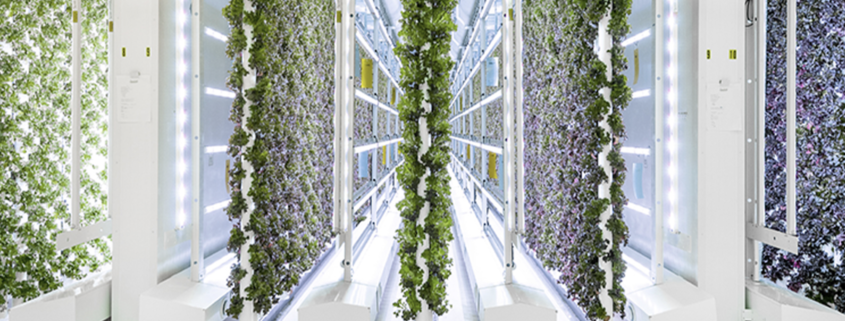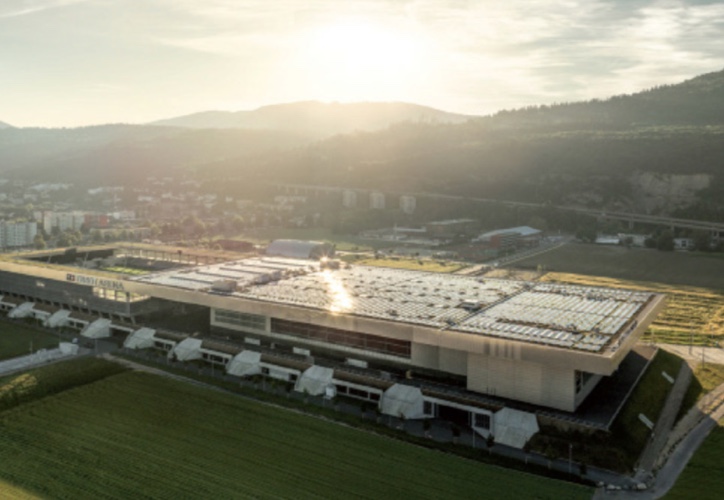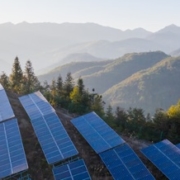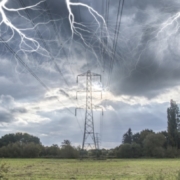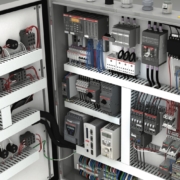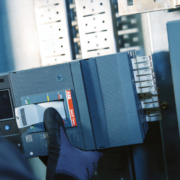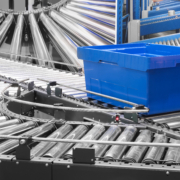Four benefits of digitalizing control panels for vertical farms
The benefits of vertical farming are somewhat offset by the challenges of indoor agriculture. The need to optimize energy usage and reduce maintenance are increasingly being met with features found in digitalized control panel components.
Drought, urbanization, and other factors are quickly reducing the amount of arable land. The UN’s Food and Agriculture Organization projects that by 2050 the amount of land suitable for agriculture will be reduced by two thirds compared to 1970. Some of the shortfall can be made up through greater productivity of field crops; much of it, though, will be filled by indoor agriculture.
But growing crops indoors creates new challenges to profitable agriculture. Vertical farm owners and operators are always eager for ways to reduce their operating expenses. A ripe opportunity lies in optimizing the efficiency of their electric power systems. That’s why many farm designers and operators are specifying control-panel components that will create smarter, more efficient operations.
As one industry expert put it, selecting the right control panel components can enable vertical farm operators to “… optimize the entire chain, when it comes to electrification, digitalization and automation of plant cultivation.”
Digitalization
The underlying technology supporting more-advanced panel design is digitalization. The term refers to technologies that store and process data in the cloud, perform remote services, conduct instantaneous transactions, empower mobile users, and provide other benefits. Industries such as media and finance have embraced digitalization, while other industries … including agriculture … are more slowly adopting it.
The current generation of power-measurement, control, and safety panel components incorporate the ability to gather, store, and transmit data related to devices status and health. Panel components are available with one-percent-accurate power metering as well as the ability to monitor frequency, phase loss, power quality, harmonics, and other power-quality factors.
All of that that data is accessible, via built-in communication options, to energy and resource management systems, ensuring reliability and protection while enabling an intelligent data hub for predictive applications, maintenance, and asset management. That data can be put to use to create the smarter operations that are absolutely crucial in maximizing productivity, reducing production costs, and mitigating environmental impact.
Today’s panel components, with their digital capabilities, provide you with four key benefits:
1. More reliable operation
Virtually every production process relies on electric motors. The number-one use of motors in global industrial and process industries is to drive pumps, a fact that’s especially true in vertical farming. Your operation probably includes hundreds, perhaps thousands, of pumps.
In industries like paper or semiconductors, the failure of a pump can be catastrophic and costly. In farming, a failed pump is typically less catastrophic, but is nevertheless a nuisance and a source of additional, and often preventable, maintenance.
Mechanical motor starters are the simplest and cheapest starting solution, but the abrupt power inrush they deliver creates stress on the mechanical and electrical components, shortening motor life.
One way to improve motor life is to ramp up the voltage gradually using a softstarter. This reduces equipment wear and maintenance, and improves process reliability. Digitalized softstarters can include advanced pump-system options, such as future-ready motor protection, flexible motor control, and fault diagnostics and maintenance. In addition, there are components with features or protection functions which benefit control, safety, and monitoring, including temperature monitoring, thermistor motor protection relay, under or over voltage monitoring relays, liquid level relays, twin pump alternative relays, safety relays and others.
2. Increased energy efficiency
You can achieve greater efficiency for your equipment by monitoring power consumption at the panel. By monitoring voltage, current, and power factor, the user can address issues such as line losses, failing equipment, and avoid surcharges related to power quality.
While the energy consumed by individual devices is relatively small, considering the number of devices in panels throughout your facility, the improvement can be significant. For example, contactors are available with coils that are 80% more efficient than lower-quality contactors. Less power through the coil also means less heat, enabling smaller or more-densely outfitted panels.
3. Advanced management
Probably of greater importance is the overall efficiency gains you can achieve by monitoring power usage across your panel components. They can provide a constant stream of data about their status and health, which can also indicate the status of your processes. Applications are available to collect, combine, and analyze those data streams, enabling you to better manage your energy, assets, and facility.
Commercial and industrial facilities are achieving energy reductions as high as 30% through energy management solutions available today. These solutions let facility managers identify devices or processes where energy is being wasted and to take corrective action.
Digitalized devices can send constant updates on their key operating parameters, making it possible to identify trends that could indicate potential problems. Those parameters can also be compared to desired operating ranges to create automatic alerts or alarms. Now, instead doing routine maintenance on all components, you can predictively focus only on potential trouble spots.
4. Automation enabled
Most farm operations incorporate some level of automation. The data from digitalized panel components open the door for additional, higher-level automation. Remote monitoring and control of water-pumping, nutrient-delivery, and wastewater removal systems are all made possible in part through smarter panel components.
The orderly arrangement of typical vertical farm facilities makes them good candidates for robotic automation. Data from your systems can provide input to the tasking and guidance of robots as they move about your facility.
Smarter components enable smarter operations
While pumps represent the highest-value opportunity for improvements via digitalized panel components, benefits can also be found in smarter panels controlling your lighting, HVAC, and refrigeration systems. When designing control panels and specifying components for your panels, consider that potential benefits of the current generation of smarter, digitalized devices.
Related blog post: “Three key benefits of unlocking the data in your digital components”
—
Diana Nuccitelli
Market Development Manager
Rosa Lopez
Market Development Manager
Joe Flaviani
Key Account Senior Sales & Project Manager

